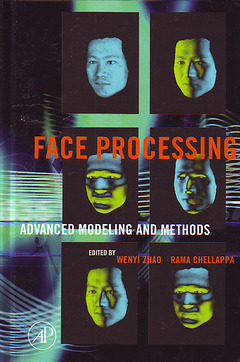Description
Face Processing: Advanced Modeling and Methods
Coordinators: Zhao Wenyi, Chellappa Rama
Language: English
Subjects for Face Processing: Advanced Modeling and Methods:
768 p. · 15x22.8 cm · Paperback
Out of Print
Description
/li>Contents
/li>Readership
/li>Biography
/li>Comment
/li>
Major strides have been made in face processing in the last ten years due to the fast growing need for security in various locations around the globe. A human eye can discern the details of a specific face with relative ease. It is this level of detail that researchers are striving to create with ever evolving computer technologies that will become our perfect mechanical eyes. The difficulty that confronts researchers stems from turning a 3D object into a 2D image. That subject is covered in depth from several different perspectives in this volume.
Face Processing: Advanced Modeling and Methods begins with a comprehensive introductory chapter for those who are new to the field. A compendium of articles follows that is divided into three sections. The first covers basic aspects of face processing from human to computer. The second deals with face modeling from computational and physiological points of view. The third tackles the advanced methods, which include illumination, pose, expression, and more. Editors Zhao and Chellappa have compiled a concise and necessary text for industrial research scientists, students, and professionals working in the area of image and signal processing.
Over the last 29 years, he has published numerous book chapters, peer-reviewed journal and conference papers. He has co-authored and edited books on MRFs, face and gait recognition and collected works on image processing and analysis. His current research interests are face and gait analysis, markerless motion capture, 3D modeling from video, image and video-based recognition and exploitation and hyper spectral processing.
- Contributions from over 35 leading experts in face detection, recognition and image processing
- Over 150 informative images with 16 images in FULL COLOR illustrate and offer insight into the most up-to-date advanced face processing methods and techniques
- Extensive detail makes this a need-to-own book for all involved with image and signal processing




